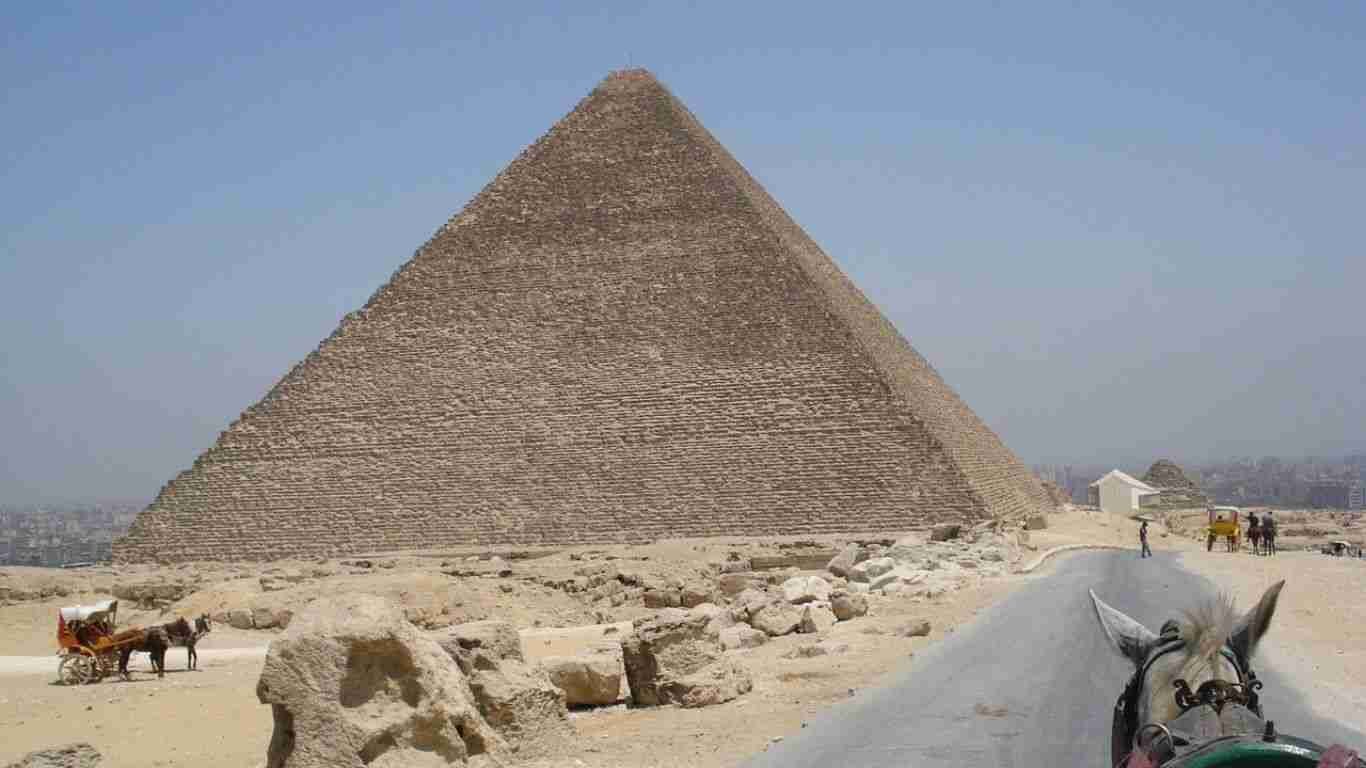
Table of Contents
ToggleIntroduction
Facts about the Pyramid of Giza is among the most astounding examples of ancient architecture ever constructed, often known as the Great Pyramid. Situated close to Cairo, Egypt, on the Giza Plateau, this colossal structure has captivated historians, archaeologists, and travelers for thousands of years. The Pyramid of Giza is a monument that endures the test of time, both in terms of its construction secrets and its mysteries. This article will examine the Pyramid of Giza’s construction methods, historical relevance, and unexpected facts, illuminating its status as one of the Seven Wonders of the World. Let’s explore the facts about the Pyramid of Giza and learn the mysteries that contribute to its unique nature.
Surprising Facts About The Pyramid of Giza
The Pyramid of Giza is surrounded by many surprising and lesser-known facts. One remarkable fact about the Pyramid of Giza is that it was originally covered with highly polished Tura limestone, which reflected the sun’s rays and made the pyramid shine brightly, earning it the name “The Shining Pyramid.”
Another astonishing fact about the Pyramid of Giza is its precise alignment with the cardinal points—north, south, east, and west—demonstrating the Egyptians’ advanced understanding of astronomy. Additionally, the Pyramid of Giza remained the tallest man-made structure in the world for more than 3,800 years, until the construction of the Lincoln Cathedral in England. These surprising facts about the Pyramid of Giza showcase the remarkable ingenuity and vision of ancient Egyptian civilization.
The Secret Rooms
A lesser-known fact about the Pyramid of Giza is that there are secret corridors and rooms that have long baffled researchers. The mystery and attraction of this old monument are increased by the fact that some of these chambers have not yet been thoroughly examined. Advanced technology like as thermal imaging have shown irregularities inside the pyramid, indicating the possibility of secret chambers or voids, however their function is yet unknown.
The Mysterious Air Shafts
A further noteworthy fact about the Pyramid of Giza relates to the supposed “air shafts” that connect the King’s and Queen’s Chambers to the outside. Thought to be ventilation shafts at first, new research indicates they may have served a symbolic function, assisting the Pharaoh’s ascension to the afterlife or lining up with particular constellations.
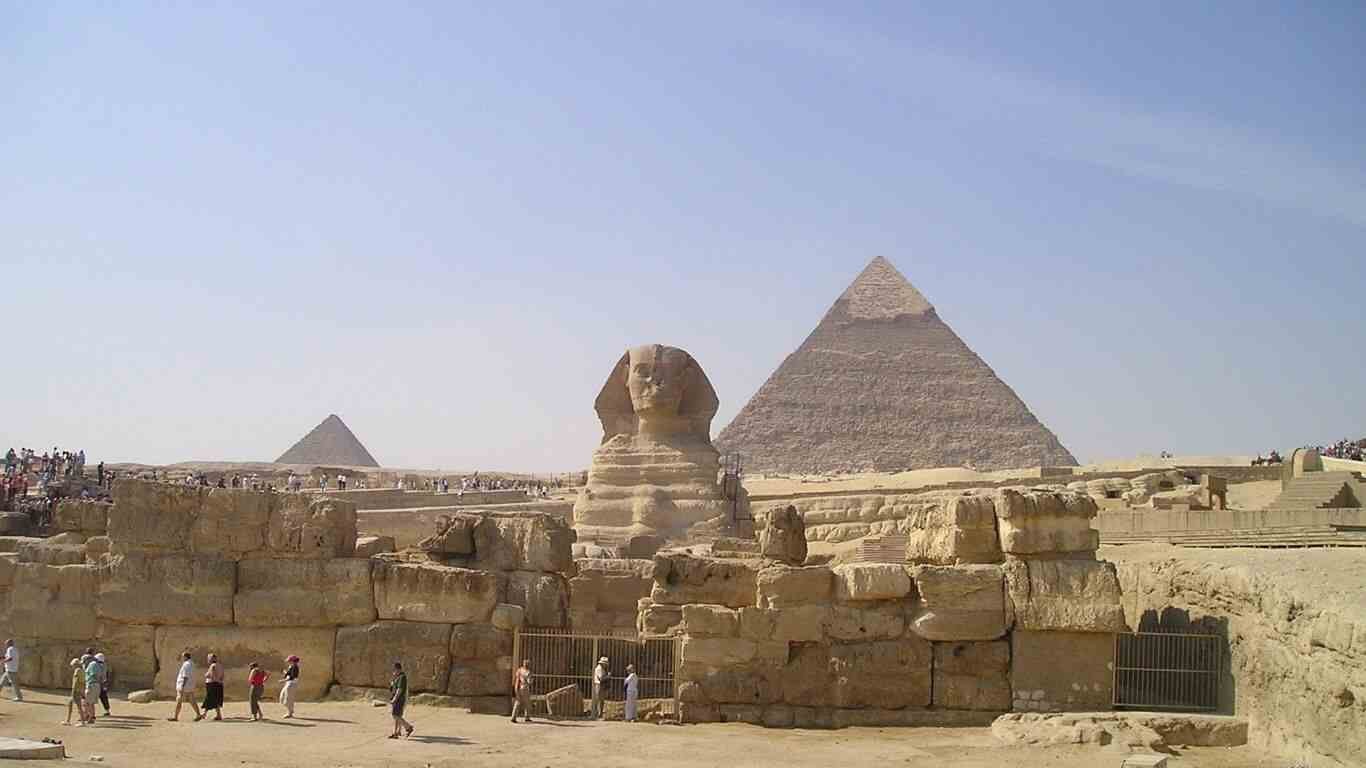
The Construction Secrets
The Pyramid of Giza’s construction is a marvel that still astonishes architects and engineers. The construction of the pyramid, which took place during the Fourth Dynasty of the Old Kingdom, is thought to have taken 20 years or more. The Pyramid of Giza is made up of roughly 2.3 million limestone blocks, each weighing between 2.5 and 15 tons. This is an interesting fact about the Pyramid of Giza. One of history’s greatest mysteries is how the ancient Egyptians were able to move and arrange these enormous stones.
Theories Applied to the Building
There are a number of hypotheses that try to explain how the Giza Pyramid was built. According to a common hypothesis, the enormous stones should be moved into position using a ramp system that is either round or straight. Another interesting fact about the Pyramid of Giza is that some academics think the blocks were moved more effectively by using water-lubricated sledges or water-channels. The remarkable engineering talents of the Egyptians are further demonstrated by the accuracy with which the stones were cut and assembled without the need for mortar.
The Labor Force
One important fact about the Pyramid of Giza is that, contrary to popular belief, a competent workforce of laborers, artisans, and engineers built it instead of slaves. These workers were treated well, both nutritionally and medically, showing that they were respected members of the community. There is evidence that up to 20,000 workers, housed in neighboring temporary towns, participated in the construction.
Why The Pyramid of Giza is One of The Seven Wonders of The World
Of the original Seven Wonders of the Ancient World, the Great Pyramid of Giza is the only one that still stands. Its continued existence is proof of the exceptional building methods and supplies employed. One important fact about the Pyramid of Giza is that, although it was constructed as a tomb for Pharaoh Khufu, no mummified remains have ever been discovered within, giving rise to a number of speculations regarding its actual function.
Design Is Unmatched
The Pyramid of Giza has unmatched scale and design. The pyramid is 13 acres in size at its base and 146 meters (originally 481 feet) high. The Pyramid of Giza was the highest man-made structure in the world for almost four millennia, which is a significant fact about the Pyramid of Giza. The pyramid’s mystique and significance as a wonder of the world are further enhanced by its alignment with the heavens, especially the constellation Orion.
An Everlasting Marvel
The Pyramid of Giza has withstood the test of time, withstanding erosion, earthquakes, and human activity. Its unwavering toughness is only another factor that makes it a wonder of the world. The facts about the Pyramid of Giza continue to captivate people and are still regarded as a testament to human inventiveness.
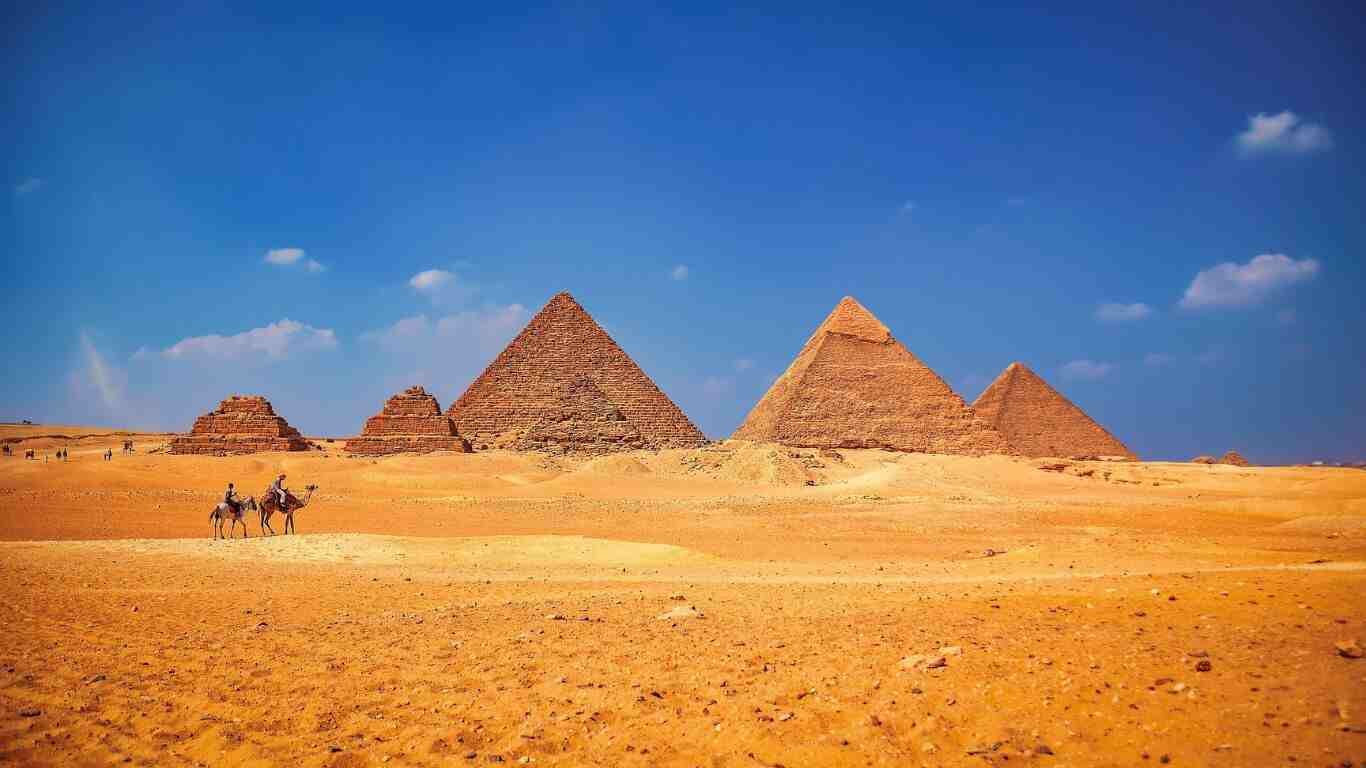
The Historical Significance
In addition to being a work of architectural art, the Pyramid of Giza represents the power and religious convictions of Ancient Egypt. The significance of the afterlife in Egyptian culture is reflected in this imposing building. One of the most important facts about the Pyramid of Giza is that Pharaoh Khufu, one of the strongest kings of Egypt, found his final resting place there.
An Emblem of Strength
The pyramid’s sheer size and grandeur were designed to demonstrate Pharaoh Khufu’s divine status and power. The fact about the Pyramid of Giza emphasizes its significance in Egypt’s religious and political environment. It was built as a component of a larger necropolis, which also contains the Sphinx, lesser pyramids, and other temples.
The Complex Necropolis
Together with other pyramids, mastabas (tombs), and the famous Sphinx, the Pyramid of Giza is a part of a sizable necropolis. This fact about the Pyramid of Giza highlights the significance of the complex as a place of worship, interment, and ceremonial practices in Ancient Egypt. The Pharaoh’s voyage to the afterlife and perpetual life were further attested to by the necropolis.
Architectural Brilliance: How The Pyramid of Giza Was Built
The Pyramid of Giza is a prime example of architectural genius in terms of its conception, execution, and durability. Constructed from a combination of granite and limestone, the pyramid’s base is 230 meters on each side, or about a perfect square (755 feet). A significant fact about the Pyramid of Giza is that its smooth, white limestone exterior was eventually worn away or eroded, exposing the pyramid’s rocky core.
Precision and Geometry
The precision of the pyramid’s construction is astounding. The sides of the pyramid are aligned almost perfectly with the cardinal points of the compass. The fact about the Pyramid of Giza that its corners are aligned within a fraction of a degree to true north shows the Egyptians’ sophisticated understanding of mathematics and geometry.
The Inside of the Pyramid
The King’s Chamber, Queen’s Chamber, and Grand Gallery are only a few of the chambers, shafts, and tunnels found inside the pyramid. There is a lesser-known fact about the Pyramid of Giza that the granite used inside was transported almost 800 kilometers (500 miles) from Aswan. Certain researchers surmise that the arrangement of the chambers was designed to guarantee the Pharaoh’s secure transition to the afterlife.
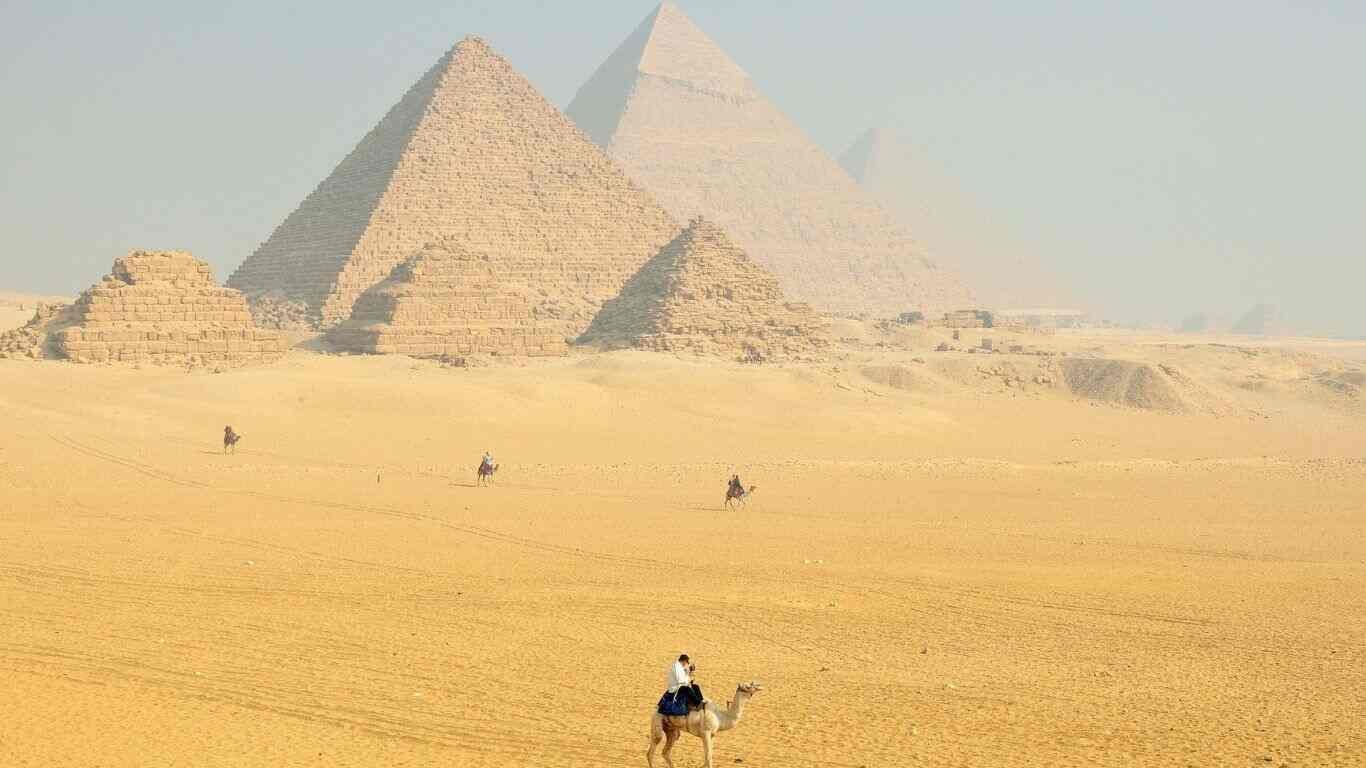
Exploring The Mysteries
For ages, academics and researchers have been captivated by the mystique surrounding the Pyramid of Giza. There are a lot of facts about the Pyramid of Giza that are still unclear, from how it was built to its intended use.
Theories Regarding the Objective
The real reason behind the construction of the Giza Pyramid remains a mystery. Although it is commonly believed that the pyramid was constructed as a tomb for Pharaoh Khufu, several ideas have been proposed in light of the pyramid’s lack of important items or remains. Though these theories are very speculative, some academics think the pyramid functioned as a power plant, a spiritual initiation center, or even an observatory for astronomy.
The Alignment of the Pyramid
The pyramid’s exact alignment with heavenly bodies remains a mystery. Some have suggested that the pyramid was built with astronomical importance because of the fact about the Pyramid of Giza that its sides correspond closely with the cardinal points and that it was meant to center around the constellation Orion.
The Role of The Pyramid of Giza in Ancient Egyptian Culture
The Giza Pyramid was an important part of ancient Egyptian civilization, representing the Pharaoh’s divine status and the society’s religious beliefs. One fascinating fact about the Pyramid of Giza is that it is associated with the Egyptian sun god Ra; the pyramid’s shape represents the sun’s rays as they approach Earth.
A Symbol of Religion
The pyramid represented the pharaoh’s trip to the afterlife and was more than just a tomb. The fact about the Pyramid of Giza emphasizes its importance as a hub of devotion and spiritual activity. It was a component of a religious complex that also included causeways and funerary temples.
Legacy Cultures
Pyramid building in Ancient Egypt reached its pinnacle with the construction of the Giza Pyramid. This fact about the Pyramid of Giza resonated with later generations, spurring the building of more pyramids and other massive constructions throughout Egyptian history.
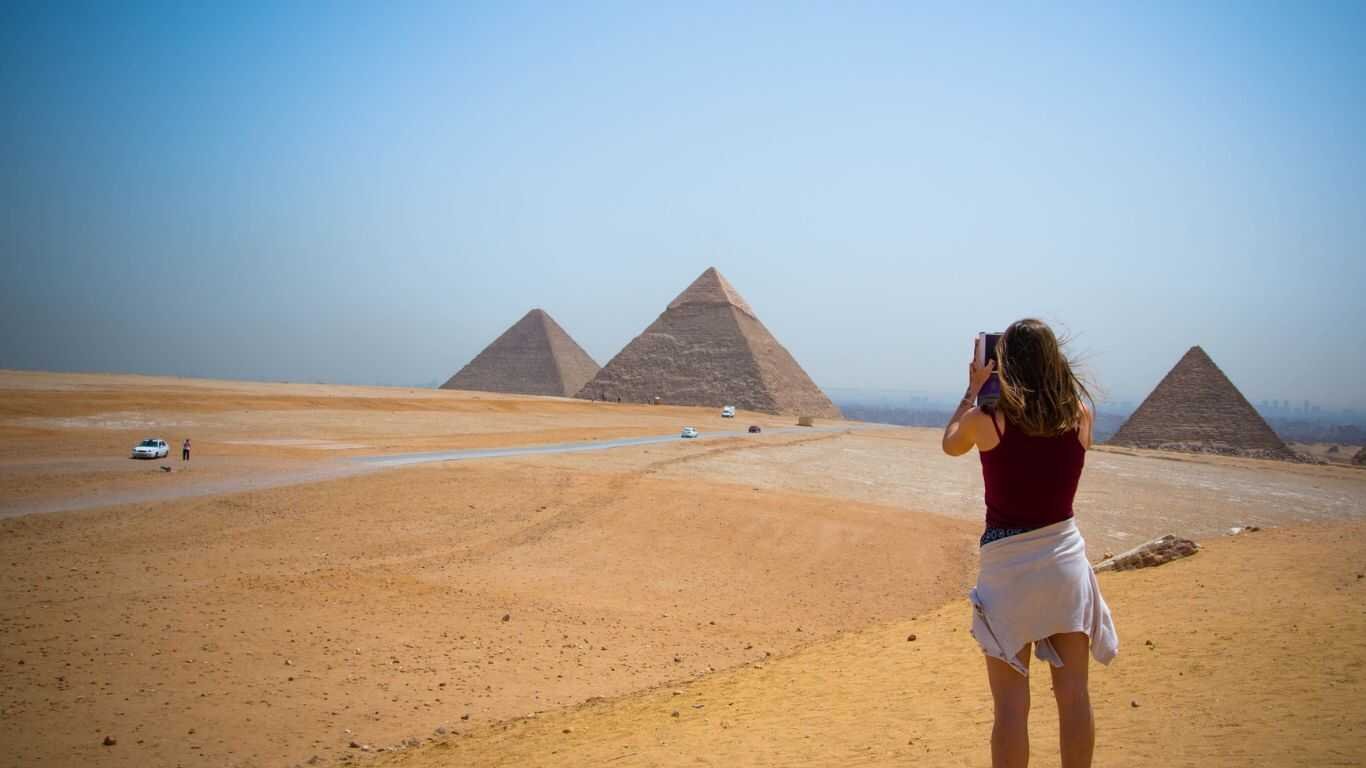
Scientific Discoveries
New knowledge about the Pyramid of Giza has been made possible by scientific investigation, which has also revealed fascinating facts about the Pyramid of Giza that contradict preconceived notions. Technological developments like infrared imaging and 3D scanning have revealed previously undiscovered structural details of the pyramid.
The Project ScanPyramids
Since its debut in 2015, the ScanPyramids project has explored the interior of the pyramid using non-invasive methods. The existence of a sizable void above the Grand Gallery—whose purpose is still unknown—is one of the important facts about the Pyramid of Giza that this effort has uncovered.
The Application of Mathematical
The measurements of the pyramid, according to researchers, are also based on sophisticated mathematical concepts, such as the golden ratio. This fact about the Pyramid of Giza shows how well-versed in geometry the ancient Egyptians were, and how they used it to their massive structures.
Top Tips for Visiting The Pyramid of Giza
It takes some preparation to have a once-in-a-lifetime experience like seeing the Pyramid of Giza. Understanding some important facts about the Pyramid of Giza will improve your trip and make you appreciate this amazing sight even more.
Arrange Your Visit
October through April, when the temperature is milder, is the ideal time of year to see the Pyramid of Giza. One useful fact about the Pyramid of Giza for visitors is that it’s best to go there early in the morning to beat the heat and throng.
What to Expect
Keep in mind that there is a lot of walking involved in touring the pyramid, so bring comfortable shoes. A helpful additional fact about the Pyramid of Giza is that although taking pictures outdoors is permitted, there can be restrictions inside; make sure to confirm the regulations in advance.
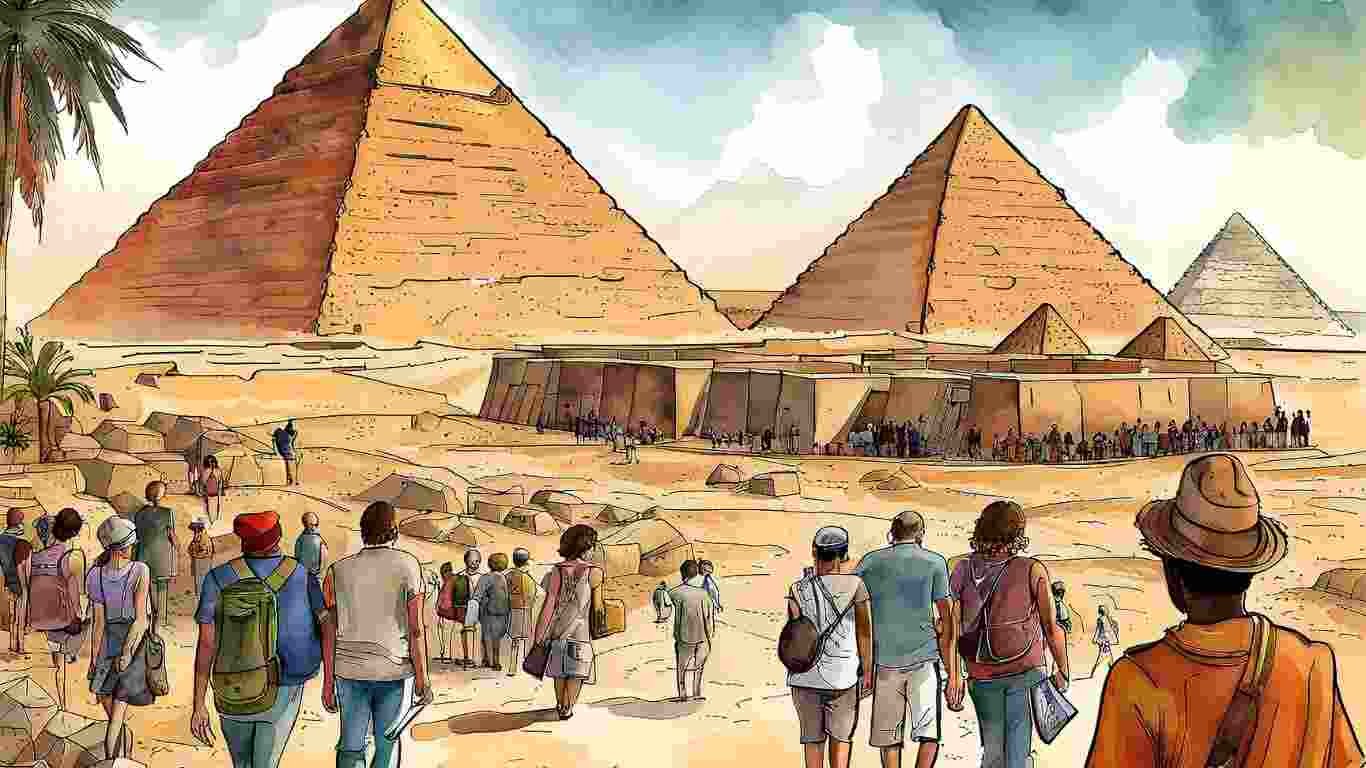
Best Time to Visit
October through April, when temperatures are lower, are the ideal months to see the Giza Pyramid. The weather is more comfortable for touring the place during this time of year. One significant fact about the Pyramid of Giza is that it can be difficult to completely appreciate the experience in the summer months due to temperatures that can rise above 40°C (104°F). In addition to avoiding the oppressive heat, traveling in the winter lets you take advantage of clear skies and comfortable temperatures.
Essential Guide for Tourists
If you’re a first-time visitor, you can enhance your experience at the Pyramid of Giza by being aware of these crucial pointers. The site is large, therefore suitable walking shoes are essential. This is an important fact about the Pyramid of Giza to keep in mind. Additionally, you should bring some cash because certain guides and sellers could only take cash. If you intend to visit any of the neighboring mosques or other places of worship, please respect local customs and dress modestly. Lastly, don’t be afraid to haggle over pricing and be ready for eager sellers.
Must-See Attractions
The Giza Plateau has a number of additional sights that are well worth seeing, in addition to the Pyramid of Giza. Nearby stands the famous Sphinx, an iconic statue with the head of a pharaoh (perhaps Khafre) and the body of a lion. One more intriguing fact about the Pyramid of Giza is that it’s next to the Solar Boat Museum, which has an ancient boat that has been rebuilt and is thought to have been used by Khufu on his journey to the afterlife. Even though they are smaller, the adjacent pyramids of Khafre and Menkaure also provide interesting historical and architectural insights.
Conclusion: Why the Pyramid of Giza Should Be on Your Travel List
A monument to human achievement, an example of the Egyptians’ inventiveness, and a source of never-ending interest, the Pyramid of Giza is more than just an old building. The remarkable facts about the Pyramid of Giza highlight the monument’s importance as an architectural, historical, and cultural marvel. Immensely captivating the world over, the Pyramid of Giza is a must-see location that never fails to awe visitors due to its mystery, history, or sheer size. Your appreciation for one of humanity’s greatest accomplishments will surely grow after visiting this ancient marvel.
